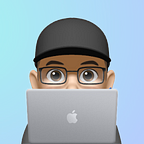What you need to know about GPT-4 and its business implications
OpenAI released its GPT-4 model today, a few months after its ChatGPT ignited general public interest in large language models (LLMs). It’s a multi-modal model that can take both images and text as input and give answers in the text format. The speed of iterations and advancements for large language models now is astonishing.
I read OpenAI’s product notes and technical report for GPT-4 as soon as I could. In this post, I’ll provide a quick non-technical first look at GPT-4, including a brief intro of the GPT model architecture, the training process, how GPT-4 differs from previous models, and the implications GPT-4 may have for applications in business. Hopefully, this article will help you understand the capabilities and limitations of GPT-4 and provide some insights into how you might incorporate it into your product.
A brief review of GPT
For those who are still not yet familiar with GPT, let me provide a brief review of GPT so that you will get a sense of what comes before GPT-4.
GPT is a large language model based on the decoder-only transformers architecture. The GPT models were pre-trained on large corpora of text, including content from websites (CommonCrawl), Wikipedia, Books, etc [1]. From this unsupervised pre-training process, GPT…
